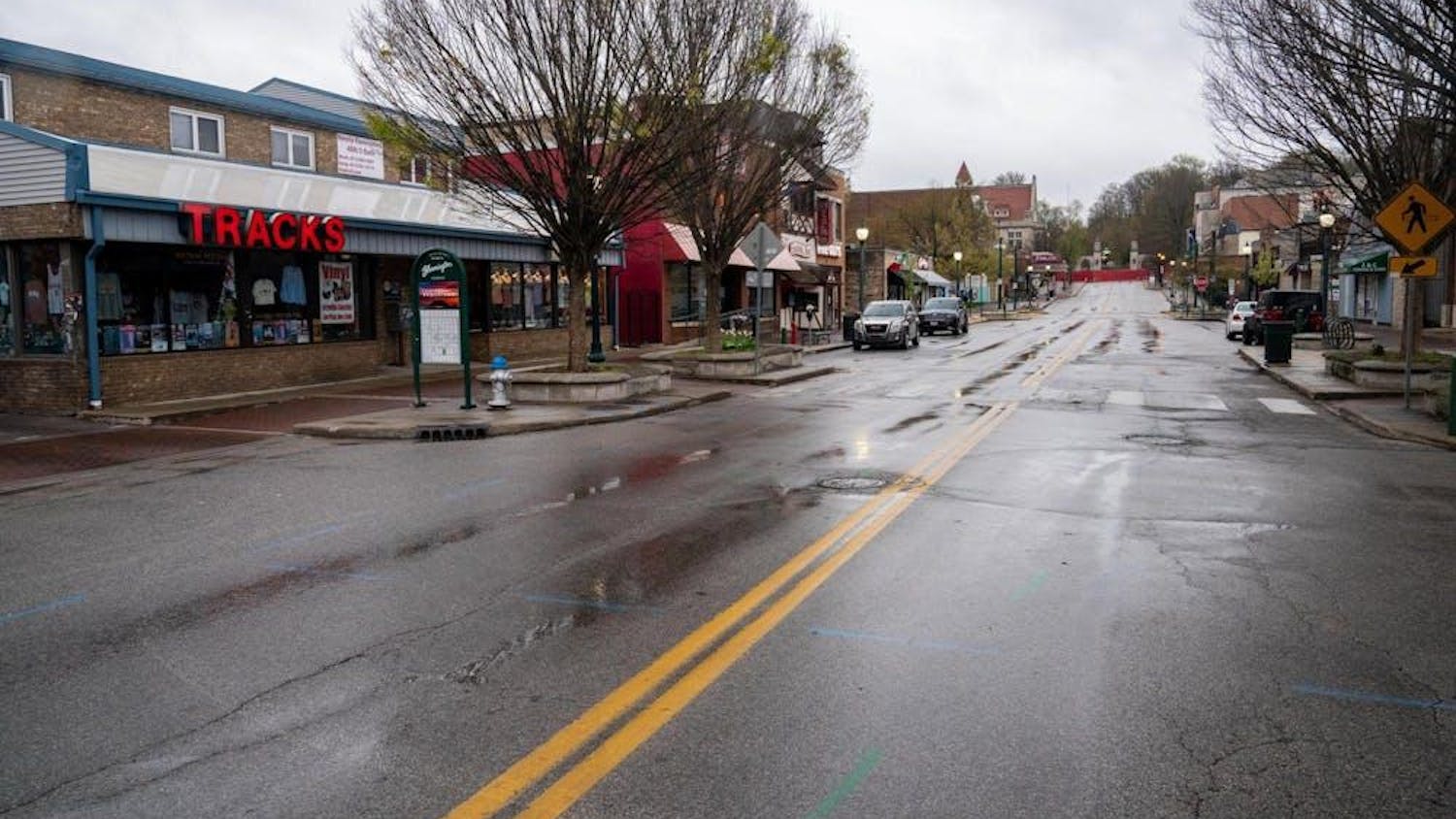The last thought Carl Field remembers running through his mind before getting hit by the car was, “Not again.”
Field was riding through the intersection of 10th Street and Fee Lane when a student driver making a left turn struck him. It was one of the four times he’s been hit in his four-decade cycling career and his first of two crashes in Bloomington.
“To tell you the truth,” Field said, “When you see it coming and you get to that last moment where it can't be avoided, you just kind of, I hate to say it, accept it. And you tell yourself, I hope this isn't really ugly, because you know what is about to happen.”
Field’s custom-made titanium Roark bike was totaled, but aside from some contusions and road rash, Field remained relatively unscathed.
Accidents like his are not uncommon in Bloomington.
In 2023, the year with the most recent crash data for Bloomington, 34 total bike crashes were reported, 2 of which caused serious injury.
One of these serious injuries was Bob DeGroff. DeGroff was 70 and biking around 250 to 300 miles a week when he was hit from behind by a pickup truck hauling a horse trailer.
He heard the frantic screech of the brakes seconds before he was thrown off his bike in an accident that shattered his femur and six bones in his back.
“There is an inherent risk, and if you cycle long enough, eventually, you’re going to either have a bad wreck on your own, or you’re going to get hit by a car,” Field said. “That likelihood is fairly high.”
Hank Duncan, Bloomington’s Bicycle and Pedestrian Coordinator, is working to mitigate that risk, by redesigning the streets of Bloomington to establish safer biking conditions.
“I get to look at a street like a blank slate,” Duncan said. “I ask myself, ‘if we were to do anything to this street, what would we do? How would we do it? How would we make this coincide with our community goals?’”
Prioritizing pedestrian safety, biker safety and the livability of the city are Duncan’s top priorities when planning infrastructure initiatives.
The bleak conditions of urban transport systems date back to the rise of the automobile in the mid-20th century, Duncan said. Roadway designers ripped out the urban fabric that accommodated pedestrians and bikers, he said, so cars could move faster and more efficiently through urban areas.
“Turns out, that's not the best idea in terms of safety or livability and a vibrant urban economy,” Duncan said.
Duncan’s job revolves around backtracking and developing the city by building better sidewalks, greenspaces and bike lanes. He hopes to accommodate for the things that were missed out on in this past century.
Recent projects have made strides toward this goal.
Expanded traffic barriers along the East Third Street bike lanes, speed cushions, protected bike lanes and rain gardens that narrow the street to make people slow down are just some of the recent works, but he said it is far from perfect.
A step forward is the construction of multi-use paths that are being built around the community, Duncan said. The paths are 10-to-12-foot-wide paths that are made specifically for pedestrians and cyclists to travel on.
Duncan said several high-volume streets in town, such as 10th Street, College Avenue and Rogers Street, still need improvements for all transportation types.
“These are streets where we have the data that shows people are getting injured and or getting killed on these streets every year,” he said.
Duncan has found from looking at other cities that generally focusing on the safety of bicycles and pedestrian subsets makes the streets safer for all modes.
Field and DeGroff, both members of the Bloomington Bicycle club, shared ways they would like to see the city improve bike accommodations.
“Four-way stops can help,” Field said. “Because people blow through red lights, and at least a four way stop means people are going to be slowing down.”
DeGroff applauded the city for the work being done on Third Street but would like to see a better job of designating bike lanes on the roads, especially in major streets downtown, so bikers don't have to ride in traffic.
Duncan said there is a common misconception that adding bike infrastructure means taking away from car infrastructure — that it becomes a zero-sum game — but said that is not the case at all.
The vehicle network is well built, he said, and no matter the changes brought forth by the city, there will always be options for drivers. He said it isn’t the city's intention to take those options away from drivers.
Adding pedestrian infrastructure and bike infrastructure, he said, are crucial aspects to safer street design.
“Just because a project is not directly benefiting motor vehicles and motor vehicle users, does not mean that it is taking away from that network,” Duncan said, “it is just adding onto that network in different ways.”






